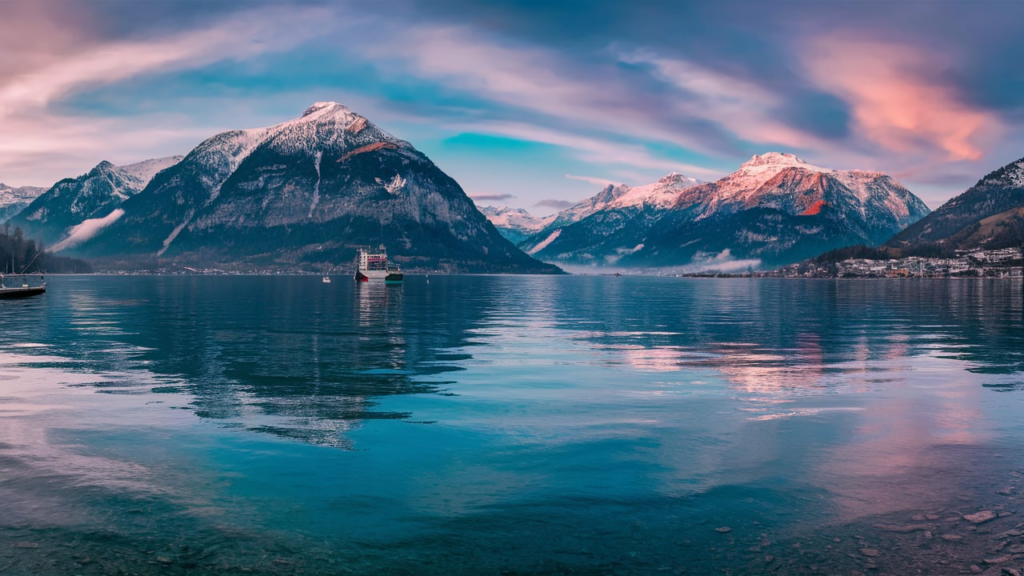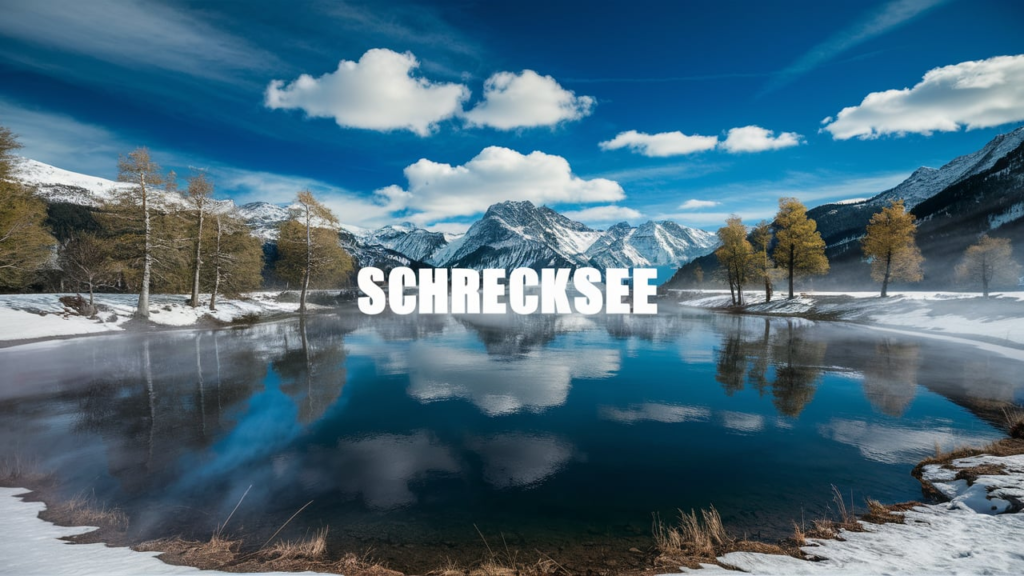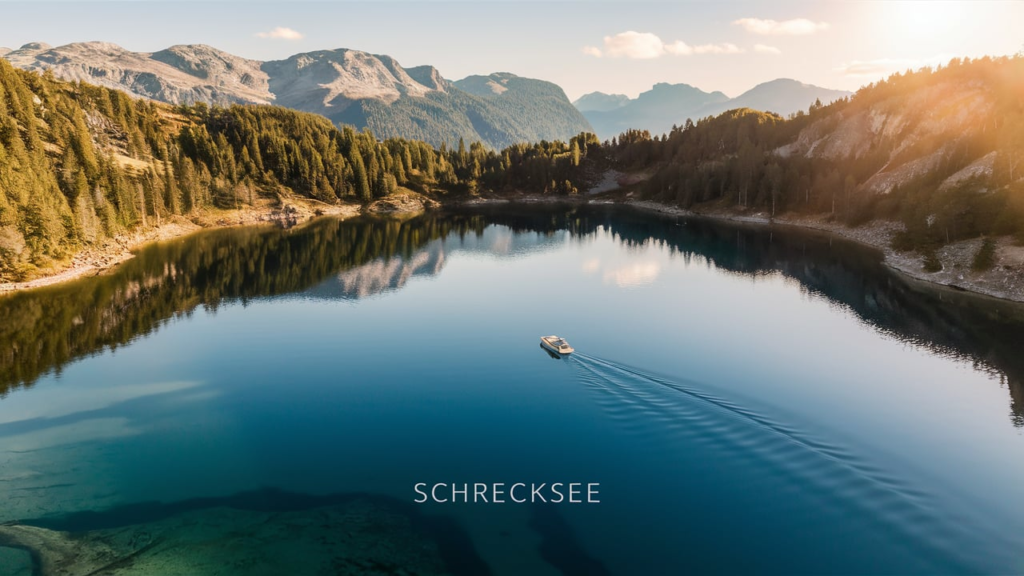This hidden gem, located in the Allgäu Alps of Germany, is renowned for its stunning natural beauty, pristine waters, and dramatic alpine scenery. Schrecksee, often overshadowed by its more famous counterparts, offers a unique blend of tranquility and adventure, making it a must-visit destination for nature enthusiasts and hikers alike. This article delves into the many facets of Schrecksee, from its geological formation and environmental significance to recreational opportunities and practical travel information.
The Geographical and Geological Formation of Schrecksee
Schrecksee is situated at an elevation of approximately 1,814 meters (5,948 feet) above sea level, nestled in the rugged terrain of the Allgäu Alps. The lake’s formation resulted from glacial activity, which carved out its deep, bowl-shaped basin during the last Ice Age. The surrounding peaks and rugged landscapes provide a dramatic backdrop to the lake, enhancing its natural allure.
The lake is fed primarily by melting snow and glaciers from the surrounding mountains, contributing to its clear and calm waters. The area’s geological composition includes a mix of limestone and granite, which adds to the lake’s striking appearance. The surrounding rock formations and alpine meadows further enrich the landscape, creating a diverse and visually stunning environment.

The Natural Beauty and Environmental Significance of Schrecksee
Schrecksee’s pristine environment is a testament to its environmental significance. The lake’s clear, turquoise waters reflect the surrounding alpine peaks, creating a breathtaking visual spectacle. The surrounding flora and fauna contribute to the lake’s ecological richness, providing habitat for various species of plants and animals.
Flora and Fauna
The area around Schrecksee is characterized by Alpine meadows, lush forests, and rugged mountain terrain. These diverse habitats support many plant species, including alpine grasses, wildflowers, and shrubs. In the summer, the meadows are adorned with colorful blooms, adding to the lake’s scenic beauty.
The region’s fauna includes a variety of wildlife, such as chamois, ibex, and marmots. Birdwatchers can also spot several species of alpine birds, including golden eagles and alpine choughs. The lake and its surroundings provide a crucial habitat for these animals, contributing to the region’s biodiversity.
Environmental Protection
Efforts to preserve the natural environment around Schrecksee are vital for maintaining its ecological balance. Conservation initiatives focus on protecting the lake’s water quality, preserving native plant and animal species, and minimizing human environmental impact. Visitors are encouraged to follow established trails, respect wildlife, and adhere to leave-no-trace principles to ensure the lake remains a pristine and protected natural area.
Recreational Activities and Hiking Trails
Schrecksee is a popular destination for outdoor enthusiasts, offering a range of recreational activities and hiking opportunities. The lake’s remote location and stunning scenery make it ideal for hiking, photography, and nature exploration.
Hiking to Schrecksee
One of the most popular ways to experience Schrecksee is by hiking to the lake. Several trails lead to Schrecksee, each offering a unique landscape perspective. The hike to Schrecksee is known for its challenging terrain and steep ascents, making it a rewarding adventure for experienced hikers.
The most common route to Schrecksee starts from the town of Hinterstein, located in the Bavarian Alps. The trail winds through alpine meadows, dense forests, and rocky outcrops before reaching the lake. Along the way, hikers are treated to panoramic views of the surrounding mountains and valleys, enhancing the overall experience.
Photography and Nature Observation
The scenic beauty of Schrecksee makes it a popular destination for photographers and nature enthusiasts. The lake’s crystal-clear waters and dramatic alpine backdrop provide ample opportunities for capturing stunning landscape photographs. The reflections of the surrounding peaks on the lake’s surface create striking visual compositions, particularly during sunrise and sunset.
Nature observation is another rewarding activity at Schrecksee. The diverse flora and fauna around the lake offer wildlife viewing and birdwatching opportunities. Visitors can observe alpine animals in their natural habitat and enjoy the vibrant colors of the alpine meadows.
Swimming and Water Activities
While Schrecksee is renowned for its stunning visual appeal, its cold, glacial waters make it less suited for casual swimming. The lake’s temperature remains relatively low throughout the year, even during the summer months, which can be challenging for those looking to dip. However, adventurous visitors accustomed to cold water might find a refreshing swim invigorating.

Kayaking and other water sports are not typically practiced on Schrecksee due to its relatively small size and its rugged terrain. Most visitors’ primary focus is to enjoy the tranquil setting and natural beauty rather than engage in active water-based activities.
Practical Travel Information
Getting to Schrecksee
Reaching Schrecksee involves navigating a combination of road travel and hiking. The nearest town with accessible transportation is Hinterstein, located in the Bavarian region of Germany. From there, visitors must embark on a hike to reach the lake.
Public transportation options to Hinterstein include regional trains and buses, which connect to major cities such as Munich. Once in Hinterstein, travelers can access trailheads leading to Schrecksee. It is advisable to check local maps and trail conditions before setting out, as weather and seasonal factors can impact trail accessibility.
Best Time to Visit
The best time to visit Schrecksee is during the summer, from late June to early September, when the weather is generally more favorable and the hiking trails are clear of snow. During this period, the alpine meadows are in full bloom, and the lake’s surroundings offer a picturesque setting for outdoor activities.
Winter visits are also possible but require careful preparation. Snow and ice can make hiking trails challenging and may necessitate snowshoes or crampons. Winter offers a serene, snow-covered landscape, but visitors should be prepared for potentially harsh weather conditions and reduced daylight hours.
Accommodation and Facilities
There are limited accommodation options directly at Schrecksee, as the area is primarily a natural and remote environment. However, visitors can find lodging in the nearby town of Hinterstein, which offers various accommodation types ranging from hotels and guesthouses to vacation rentals.
Facilities around Schrecksee are minimal, so visitors should plan to bring essential supplies, including food, water, and hiking gear. Carrying a map, compass, or GPS device is also important to complete the trails safely.
Safety and Preparedness
Due to the challenging terrain and elevation gain, hiking to Schrecksee requires a moderate to high level of physical fitness. Visitors should be prepared for sudden weather changes, as alpine conditions can be unpredictable. Proper hiking gear, including sturdy boots, weather-appropriate clothing, and sufficient food and water, is essential for a safe and enjoyable experience.
Additionally, it is advisable to inform someone of your hiking plans and estimated return time before setting out. Checking weather forecasts and trail conditions before hiking can enhance safety and help plan a successful trip.
Conservation and Responsible Tourism

Preserving Schrecksee’s natural beauty requires responsible tourism practices. Visitors are encouraged to respect wildlife, follow designated trails, and avoid leaving any waste behind. Adhering to the principles of Leave No Trace helps protect the lake’s pristine environment and ensures that future generations can enjoy its splendor.
Respect for Wildlife
Wildlife in the Schrecksee region should be observed from a distance to avoid disturbing their natural behaviors. Feeding animals or getting too close can disrupt their habitats and negatively affect wildlife and visitors.
Trail Etiquette
Sticking to marked trails helps prevent soil erosion and minimizes the impact on the surrounding vegetation. Hikers should follow established routes and avoid creating new paths, which can damage the delicate alpine ecosystem.
Conclusion
Schrecksee stands as a remarkable testament to the natural beauty and rugged splendor of the Alps. Its clear, turquoise waters and dramatic alpine backdrop offer a unique and tranquil experience for those who venture to this remote destination. The combination of challenging hikes, breathtaking scenery, and the opportunity to connect with nature makes Schrecksee a treasured spot for outdoor enthusiasts.
Understanding the lake’s geographical formation, environmental significance, and the best practices for visiting can enhance the experience and ensure that Schrecksee remains a pristine and cherished part of the alpine landscape. Whether you’re an avid hiker, a nature photographer, or simply seeking a peaceful retreat, Schrecksee provides a captivating setting that showcases the raw beauty of the natural world.





